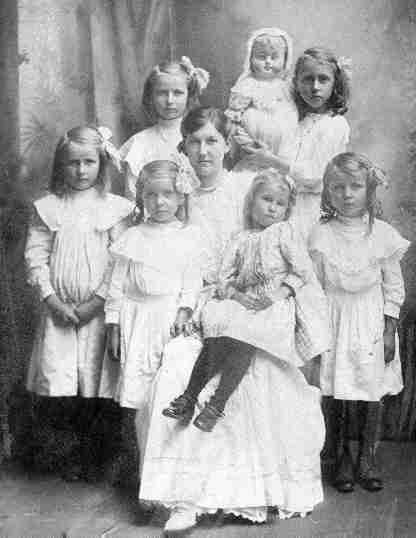
Figure 1.--This mother probably 1890 has all her children in dresses, ringlets, and hairbows. Is it possible that all of her children were girls? HBC think it is unlikely and that at least two were boys.

This American mother is pictured with her six children, probably in the early 1890s. At first glance they all look like girls as they are wearing dresses and have ringlets and hair bows. None of the dresses have any boyish touches what so ever. HBC believes, however, that at least two of the chilodren were boys.
Could all the children be girls? Seven girls in one family seems rather unlikely. Of course it is possible that the children are all girls, but the odds on that are astronomically high. An HBC contributor calculates that the odds of having 6 girls is 1 out of 64 or only about 1-2 percent. (Don't be confused by the doll, also in a white dress.)
Of course it is possible that the mother wanted a photograph with just her daughters. The children are all fairly close in age. The oldest child looks only about 10 or 11. The mother would have had to have had an awfully large number of children on an extrodinarily frequent interval to have had boys as well. Several are so close in age that it would not have been possible to have had other children in between. More than likely this was the entire family.
The dresses are not identical, but they are fairly similar. Actually the two children immediately at mother's side do wear identical dresses. The dreses are are all white without any boyish styling touches--although none of the dresses have really elborate lace and ruffle trim. Mothers who wanted to dress their children alike, would not chooses boyishly styled dresses. That would have been inappropriate for the girls. All the children, at least the ones that can be observed, wear seemingly identical long bkack stockings.
It is impossible to tell from the faces whether the children or boys or girls. Several of the children could be either boys or girls. The ringlets and hairbows suggest that they were girls, but a great deal of evidence shows that American boys in the late 19th century wore ringlet curls, and a few even wore wore hair bows although that was less common. While it is impossible to conclusively determine the children's gender, it is posible to make some speculative assessmets.
HBC believes that the two older children at the back are definitely girls. They both look like girls and at any rate boys at that age would almost certainly be breeched, not to mention be holding a babby doll. The child at the left is also probably a girl. HBC believes that the hair style, shoulder length uncurled hair, in America strongly suggests a girl. HBC has not noted boys of the period with such a hair style. There is a strong posdsibility that the two children immediately flanking their mother are boys. Note that they are dressed exactly alike, including the ringlet curls. Their ringlets are quite similar to hair styles commonly worn by boys in the late 19th cebntury. They also aeem to have boyish faces, although this is impossible to hudge with any great accuracy. HBC is unable to even speculate on the child mother is holding.
An astute HBC contributor has an alternative assessment: I found the HBC assessment interesting, but I think the reasoning is quite a stretch. I thought the youngest one might be a boy because (1) young enough not to be breeched and (2) "his" dress is the
only one without a large collar.
Navigate the Boys' Historical Clothing Web Site:
[Return to the Main family style page]
[Return to the Main common family style page]
[Return to the Main common family style page: dresses]
[Introduction]
[Chronology]
[Clothing styles]
[Biographies]
[Bibliographies]
[Activities]
[Countries]
[FAQs]
[Fashion messages]
[Contributions]
[Boys' Clothing Home]
